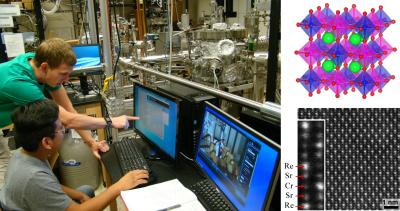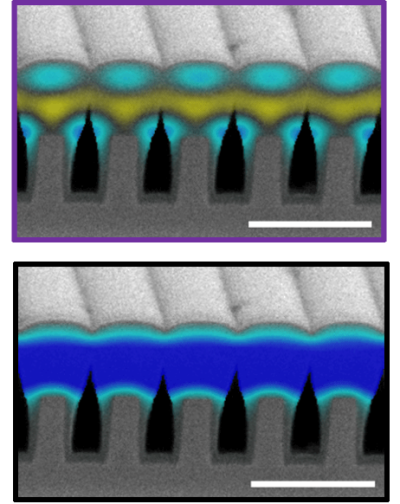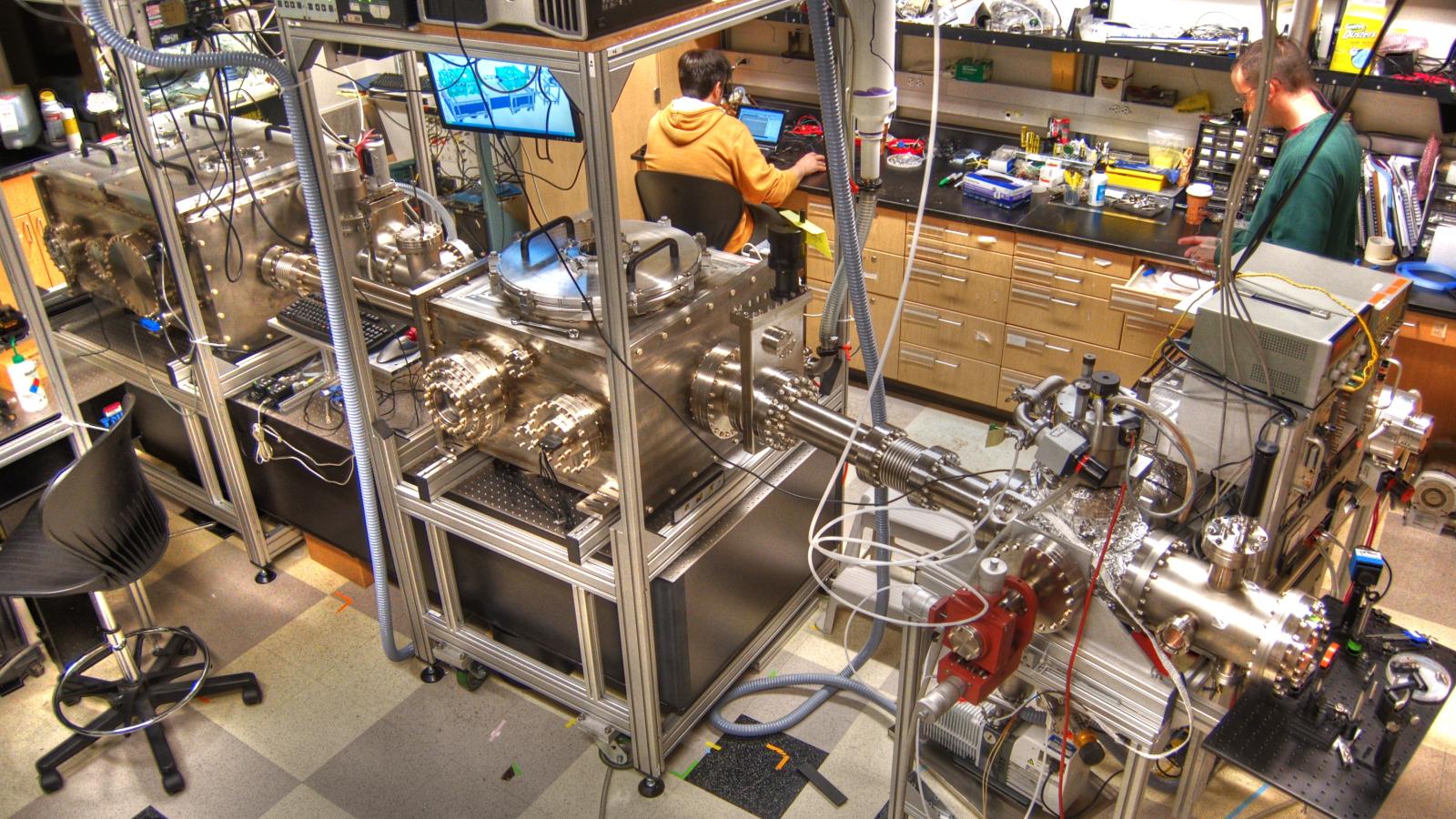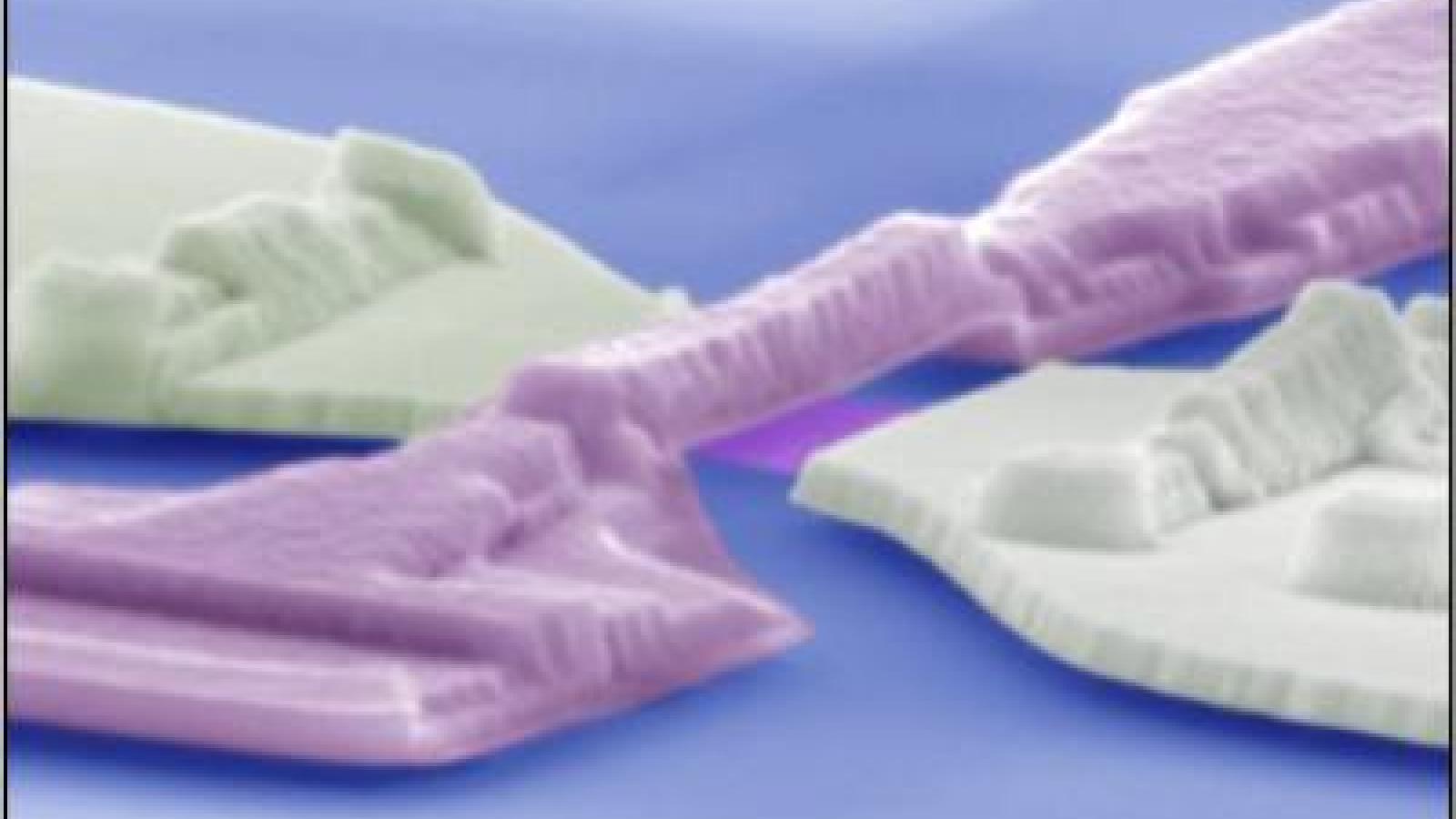The largest research area in physics today deals with the diverse and fascinating properties of condensed matter, encompassing metals, semiconductors, superconductors, polymers, fluids and superfluids, magnets and insulators. This area corresponds to the single largest research group in the department, involving 12 experimentalists and eight theorists.

• Scanning tunneling microscopy studies of quantum electronic phenomena and atomic scale reactions at surfaces of semiconductors and low-dimensional materials.
Experimental groups ordinarily consist of a professor, possibly a postdoctoral researcher and several graduate students, with support from a federal source, such as the National Science Foundation or Department of Energy, or from an industrial source.
Group members benefit from each other through sharing of laboratory equipment and expertise, as well as through formal collaborations and materials-related research centers, including the Center for Emergent Materials and the Center for Exploration of Novel Complex Materials. There are also a number of excellent shared research facilities located in the Physics Research Building (see Facilities, Support and Student Groups page).

In addition to strong interactions among the condensed matter experimentalists, a large and active theory group offers expertise in a broad range of subjects. There are about 50 PhD students in condensed matter physics, and at least that many ongoing research projects. They reflect the major directions of current condensed matter research. Some of the problems being investigated are listed below:
- Magnetic and electronic properties of nanoscale magnetic, semiconducting and metallic systems.
- Novel approaches to very high resolution scanned probe microscopy.
- Ultra-high vacuum growth and characterization of complex oxides and other materials with novel magnetic, electronic and thermal properties.
- Magnetic resonance and ferromagnetic resonance force microscopy of novel materials, device structures and nanostructures.

Electron microscopy image of nanowires formed from a molecule based ultra-low loss ferrimagnet. The color represents the amplitude of quantized magnon (spin-wave) modes in the nanostructures. Scale bar is 500 nm.-Johnston-Halperin Group - Optoelectronic, microelectronic and nanoelectronic interface atomic structure.
- Device physics of polymer-based magneto-optical-electronic device structures.
- Semiconductor interface growth, processing and characterization by ultra-high vacuum surface science techniques.
- Schottky barriers and heterojunction band offsets.
- Raman scattering and magneto-optical imaging of submicron and nanostructures.
- Brillouin scattering studies of magnetic and elastic properties of hybrid structures and membranes.
- Manipulation and control of living cells using magnetic fields and nanostructures.
- Emergent low energy degrees of freedom of complex correlated material systems (quantum matter) using optical spectroscopies with femtosecond and picosecond time resolution.
- Ultrashort pulses of terahertz and infrared radiation to control/modify quantum matter states.
- Spin transport in graphene and other two-dimensional materials.
- Molecular Beam epitaxy of novel magnetic heterostructures.
- Ultrafast optical microscopy and spectroscopy.
* Header Photo: Scanning electron microscope image of a suspended graphene device with suspended top gate. -Lau Group
Faculty
Quantum information


